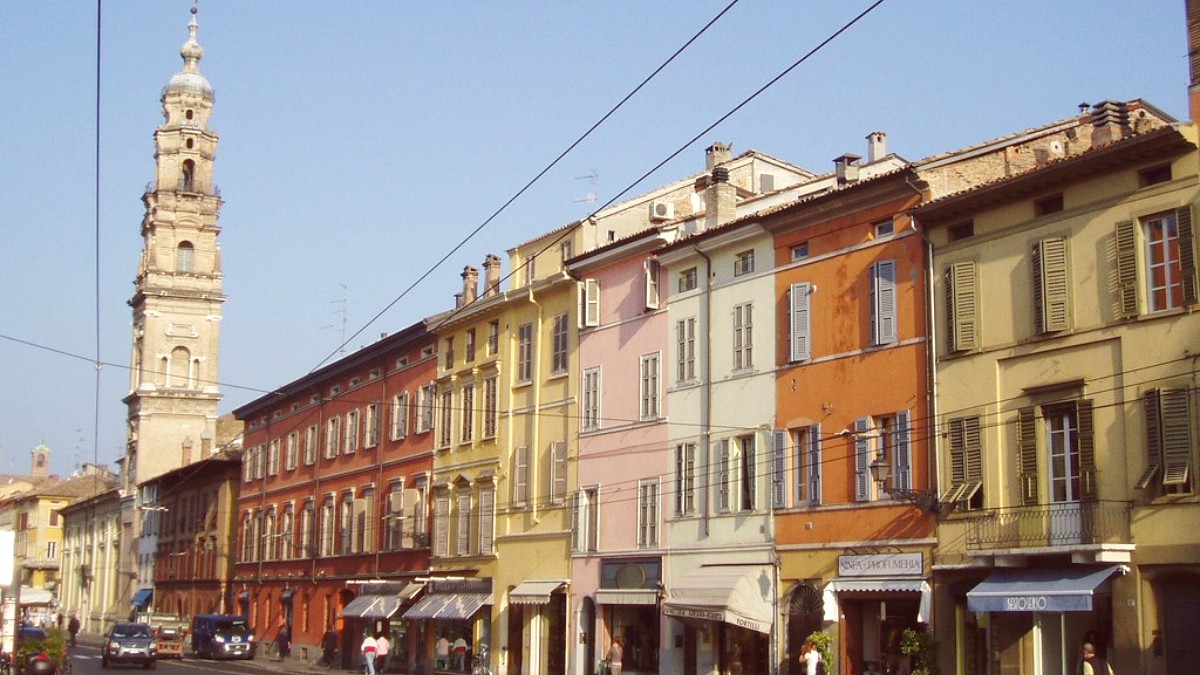
Emilia Romagna And San Marino, Italy
Parma experiences a humid subtropical climate, with distinct seasons each offering a different atmosphere. Temperatures are mild and pleasant in spring (April-May), typically 10°C to 20°C (50°F to 68°F), with moderate rainfall. Summers (June-August) are hot and humid, 20°C to 30°C (68°F to 86°F), with temperatures climbing above 35°C (95°F) possible during heatwaves.
Autumn (September-October) brings mild and pleasant weather, similar to spring. Winters (November-March) are cold and damp, 0°C to 10°C (32°F to 50°F). Fog, known as "nebbia," is common and dense, affecting visibility.
High Season (June-August, December) brings warm weather and festive Christmas markets. This period sees higher accommodation and flight prices, with more crowds. Summer humidity can be intense. Many local businesses close for Ferragosto (mid-August) holidays.
Shoulder Season (April-May, September-October) offers pleasant temperatures for sightseeing and walking, with fewer crowds and generally lower prices. Autumn foliage makes a beautiful backdrop. A higher chance of rainfall may occur. Low Season (November-March, excluding December holidays) finds the fewest crowds and lowest prices. The weather is cold and damp, with frequent fog. Some outdoor activities become less appealing.
June-August, December
Warm weather, outdoor cafes, festive December.
Higher prices, more crowds, intense summer humidity, mid-August closures.
April-May, September-October
Pleasant temperatures, fewer crowds, lower prices, beautiful autumn.
Higher chance of rainfall, some smaller establishments with reduced hours.
November-March (excl. Dec)
Fewest crowds, lowest prices, authentic local experience, active cultural life.
Cold, damp weather, frequent fog, some outdoor activities less appealing.
Italy is a member of the Schengen Area, which simplifies travel for many nationalities. Short-Stay (Schengen) Visa is for stays up to 90 days within any 180-day period for tourism, business, or family visits. Apply at the Italian Embassy or Consulate in your country of residence, or through a designated visa application center. Apply well in advance of your trip.
Citizens of many countries, including the United States, Canada, Australia, New Zealand, the United Kingdom, and most EU member states, do not need a Schengen visa for stays up to 90 days. Entry is with a valid passport. Passports remain valid for at least three months beyond your planned departure date from the Schengen Area, issued within the last 10 years, and with at least two blank pages.
Valid for at least three months beyond departure, issued within 10 years, with two blank pages.
If a visa is required, complete and sign accurately.
Recent passport-sized (35x45mm, white background).
Mandatory for Schengen visa, €30,000 minimum coverage. Strongly recommended for all travelers. World Nomads, SafetyWing, Insubuy.
Evidence of sufficient funds, round-trip itinerary, proof of accommodation. IVisa, VisaHQ can assist with applications.
The official currency in Italy is the Euro (€, EUR). ATMs (Bancomat) are widely available. Credit and debit cards (Visa, MasterCard) are accepted in most hotels, restaurants, and larger shops. Inform your bank of your travel plans before departure.
Prices per night vary based on style and location.
Daily meal expenses for different experiences.
Estimated total daily costs per person for different travel styles.
| Travel Style | Accommodation | Meals | Activities | Total Daily Cost |
|---|---|---|---|---|
| Budget Traveler | €25-€50 | €20-€40 | €0-€10 | €50-€80 |
| Mid-Range Traveler | €80-€150 | €40-€80 | €10-€30 | €100-€180 |
| Luxury Traveler | €180+ | €80+ | €30+ | €250+ |
Parma is a generally safe city, but awareness of common issues is always a good idea.
No specific vaccinations are required for Italy for most international travelers. Ensure routine vaccinations are current.
Traveler's diarrhea risk is low. Sunburn/heatstroke in summer: use High SPF sunscreen, Wide-brimmed hat. Minor injuries: carry a basic Travel first aid kit.
Italy has a high-quality public healthcare system. EU citizens use EHIC. Non-EU citizens: comprehensive travel insurance is strongly recommended.
Italy's main emergency number is 112.
This number coordinates ambulance, police, and fire services. Other direct numbers: 118 (Medical Emergency), 113 (National Police), 112 (Carabinieri).
Pharmacies (farmacia, green cross) can offer advice for minor ailments. Always check official Italian Ministry of Foreign Affairs website for updates.
AirHelp assists with flight compensation.
Tap water in Parma is safe and potable. Drink directly from the tap or public fountains. LifeStraw products are for unique situations, not typical tap water.
Italy has rigorous food safety regulations. Food hygiene standards in restaurants and markets are generally very high.
Eat at reputable establishments to keep any risk of traveler's diarrhea low.
Parma is a relatively safe city. Petty crime, mainly pickpocketing, can occur in crowded tourist areas, major squares (like Piazza Garibaldi), and on public transport, especially near the train station.
Travel insurance is highly recommended for all travelers to Italy. A comprehensive policy should cover medical emergencies, trip cancellation or interruption, lost luggage, and personal liability. Research different providers.
Look for medical emergencies, trip cancellation, lost luggage, and personal liability.
World Nomads for adventurous travelers; SafetyWing for digital nomads.
Keep digital and physical copies of your policy, passport, and visa. Leave a copy with someone at home.